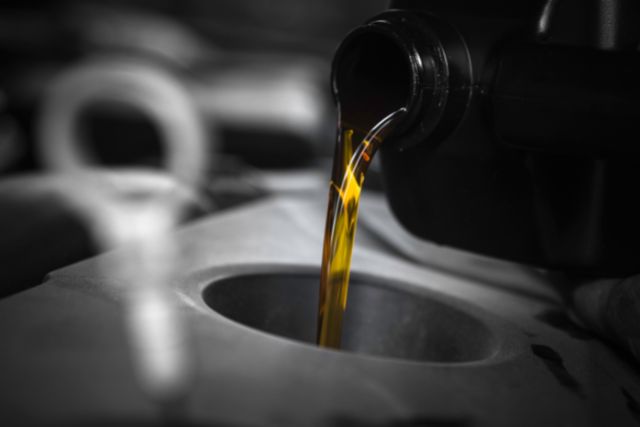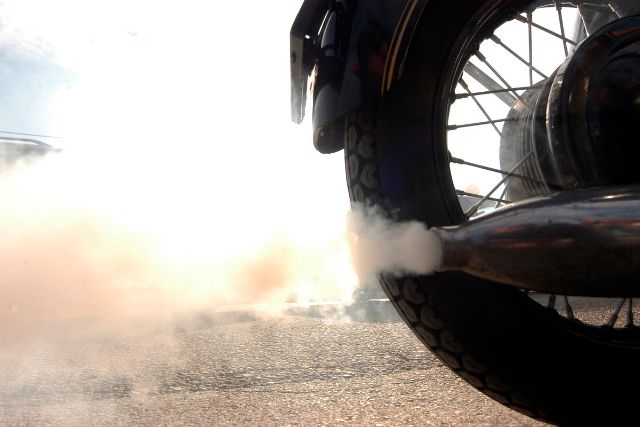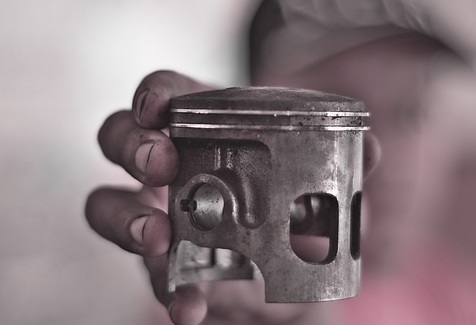Piston rings seal the gap between piston and cylinder walls. If they get damaged or worn out, it can be harmful to the engine performance and even result in piston damage.
So, how to know if your motorcycle piston rings are bad?
Here are the signs of bad piston rings in the engine:
- Excessive engine oil consumption
- White smoke from exhaust
- Low compression in the engine
- Decreased power and acceleration
- Piston slapping
Before diving into these signs in detail, lets get an overview of piston rings.
What Are Piston Rings?
Piston rings are cast iron ring strips attached to the piston grooves along its outer walls.
Piston rings seal the gap between the piston outer diameter and the cylinder walls. This helps in segregating the combustion chamber and the crank case so the the fuel mixture won’t flow from combustion chamber to the crank case and the oil from crank case to the chamber.
In addition, piston rings also help in heat transfer from the piston to the cylinder as well as guiding engine oil to scrape along the piston walls and into the crank case for lubrication.
Here is a more detailed post on what piston rings are and what is their role in an engine.
5 Symptoms Motorcycle Piston Rings Are Bad
Here are the signs that candidate your motorcycle piston rings are bad.
#1: Excessive Engine Oil Consumption

Bad or damaged piston rings no more seals the combustion chamber and segregate the fuel mixture in the combustion chamber and the engine oil in the crankcase to not move into one another.
When the piston rings fail to do their job, the engine oil in the crankcase moves up to the combustion chamber rather than scraping along the piston walls and going back into the crankcase through the oil holes present below the oil scraper piston rings.
And what happens when the oil moves up to the combustion chamber? the oil gets burnt!
So every time a portion of engine oil moves up from the crankcase to the combustion chamber because the piston rings are not barricading it, the oil gets completely burnt once it enters the chamber.
As a result, you will see an excessive consumption of engine oil whenever your piston rings are damaged or worn out.
Even if you top up the engine oil, you will notice the oil levels decreasing at an exceedingly faster rate. And that’s one of the indications to you that the piston rings might be bad.
#2: White Smoke From Exhaust

This is an extension of the previous point.
When the oil is consumed in the combustion chamber, it burns and goes out of the engine through exhaust ports and comes out as white or grey smoke from the exhaust.
What is happening is, when the piston rings are failing and are allowing the oil to move up the piston and into the combustion chamber, the oil gets burnt along with the air-fuel mixture during each combustion cycle in the engine.
This results in oil getting combusted along with the fuel.
Now, what happens to this burnt oil? it turns into white or grey smoke and escapes out of the engine through the exhaust ports – just like exhaust gases.
And then comes out of the exhaust pipe as this grayish or white smoke.
So, whenever you see white smoke coming out of your exhaust pipe, chances are high that your piston ring is bad and damaged.
#3: Low Compression In The Engine

Low compression in the engine is the result of the compression ring failing to block air-fuel mixture entering into the crankcase from the combustion chamber.
The ideal compression ratio of motorcycle engines is between 8:1 to 13:1. Anything lower than that, there is a problem.
The main role of the compression ring, the topmost piston ring is to seal the gap between the piston and the cylinder walls.
This is to ensure that the air-fuel mixture does not travel down from the combustion chamber to the crankcase. No trickling down of fuel mixture to the crankcase means no loss of pressure on the piston. Hence, the maintenance of high compression during the combustion cycle which will translate to higher engine power.
However, all this goes for a toss when the compression ring is damaged or worn out.
A damaged or worn-out compression ring will not seal the combustion chamber properly. As a result, the air-fuel mixture will trickle down to the crankcase, thereby reducing the compression on the piston.
That’s how the engine faces low compression when the compression ring is bad, damaged, or worn out.
#4: Decreased Power And Acceleration

This is in continuation of how low compression affects engine performance.
If the engine compression is low, although motorcycle engines are less affected when compared to car engines, the effects still persist.
When the air-fuel mixture finds the gap between the piston’s outer surface and the cylinder walls due to piston rings not sealing, they flow into the crankcase.
This loss of fuel mixture within the combustion chamber results in a loss of power for the engine. As a result, the motorcycle, or even car for that matter, experiences a significant drop in power and acceleration.
However, the catch here is, you cannot directly correlate low power and acceleration with damaged or worn-out piston rings.
There may be several other reasons for your vehicle to experience low power and acceleration and damaged or worn-out piston rings are just one of them.
So, while low power and acceleration are one of the definite symptoms of bad piston rings, you need further evidence from other symptoms to directly attribute the cause to the piston rings here.
#5: Piston Slapping

Piston slapping is when the piston makes contact with the cylinder walls and slaps against either side of the walls while moving up and down.
Piston slapping happens when the piston rings are bridging the gap between the piston’s outer diameter and cylinder walls. When piston rings are worn out, the gap widens for the piston to tilt and slap against the walls.
You can identify piston slapping by the loud noises coming from the engine.
Piston slapping is a serious concern since if you let it go on for a long time, the piston will get damaged and has to be replaced with a new one.
So, whenever you hear loud noises coming from the engine, piston slapping is the issue and is most probably caused by worn-out piston rings.
What To Do When Piston Rings Are Bad?
Firstly, you need to verify it is the piston rings that are damaged or worn out and not any other engine part, mostly, the valves.
The surefire way to confirm is to run a compression test on your engine. If the compression test returns with the engine having low compression, then you can be sure that the piston rings are bad and are at fault.
Once you confirmed that the piston rings are bad, there is no other way than to remove the engine cylinder head, pull out the piston and replace the piston rings with a new one.
The piston removal process is a quite complicated one and it is better to hand it over to a service shop or your dealer.
